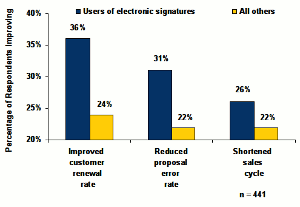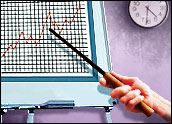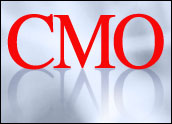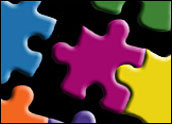
As sales organizations endeavor to escape the constricted economy of the 2009 recession, one of their most significant barriers is stagnant progress regarding bringing their sales cycle under control.
Recent Aberdeen research published for “Inside Sales Enablement: Let Them Drink Coffee!” (Dec. 2009) reveals that not only did under-performing companies see a year-over-year increase in their sales cycle of 12 percent, but even the Best-in-Class, or top 20 percent of performers among over 500 companies surveyed, experienced a slight (1 percent) lengthening of their own lead-to-win timeframe.
As top-performing selling teams continue searching for ways to reduce this window, as well as to increase their win/loss “batting average,” the use of electronic signature capture tools holds potential promise for better sales team performance in 2010.
Aberdeen research conducted in March, 2010, for the pending benchmark study, “Automating Lead-To-Win: Shrinking the Sales Cycle and Focusing Closers on Sealing More Deals” (May, 2010), of 441 corporate sales teams included 67 companies currently deploying electronic signature capture technology, and early indicators are that these organizations are realizing concrete performance advantages over other survey respondents.

Deconstructing Successful Use of Electronic Signatures
As Figure 1 details, a series of key performance indicators (KPIs) that Aberdeen tracks among survey respondents provides insight into how electronic signature-friendly sales organizations are improving their results. This graph shows that by an average delta of 36 percent, more of these companies showed year-over-year improvement in the following metrics, when compared to all other organizations.
- Customer renewals: As reported in Aberdeen research published in Providing a 360-Degree View of the Customer: Better Service — Higher Sales (March, 2010), Best-in-Class companies average a 91 percent customer retention rate, compared to 78 percent for Industry Average and 62 percent for Laggard organizations.
These same top performers realize an average 6 percent annual increase in the net client value of their customers, compared to 2 percent and 9 percent decreases for the other maturity classes; this validates the importance of focusing on customer renewals by electronic signature users, who support their customers’ efficiency by avoiding time-consuming paper trails and providing online signing functionality.
- Proposal quality: Among the full 441 survey respondents for the Lead-to-Win research, the Best-in-Class reveal an average time-to-signature — the average amount of time that transpires between the point where a contract is requested, and the time when the signature is received — of 23 days, compared with 37 days for other companies. This 61 percent differential can certainly be impacted by a sales team’s efforts to reduce the number of contract or proposal iterations that are produced both internally and in customer-facing form, by working harder, and smarter, to avoid creating documents that include errors. One of the tenets of electronic signature products indeed focuses on ensuring that the physical location and timing of required contractual signatures are clearer to the buyer when using electronic rather than hard-copy versions.
- Shorter sales cycles: With an overall average sales cycle of 4.5 months, survey respondents clearly need plenty of time to close their deals, which are typically sized in the US$250,000 to $300,000 range. Users of electronic signatures have been more successful than other companies in reducing these cycle times on a year-over-year basis, ostensibly because they create an easier, online experience for their prospects and customers to “seal the deal” rather than relying on printed matter shipped by email, fax or courier to receive the final agreement as confirmed by the buyer’s signature. As indicated above, the time-to-signature gains achieved by using the technology in the “last mile” of the decision-making journey helps reduce the time associated with final barriers to closing business.
Peter Ostrow is research director of sales effectiveness at the Aberdeen Group.

















































